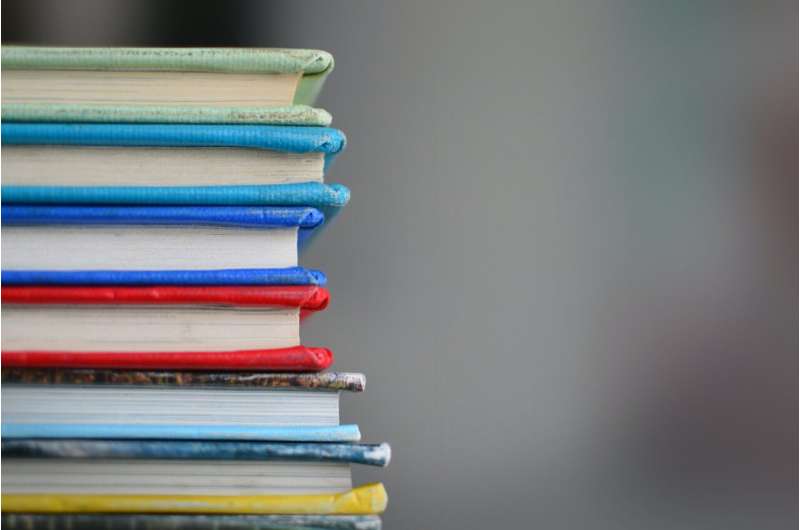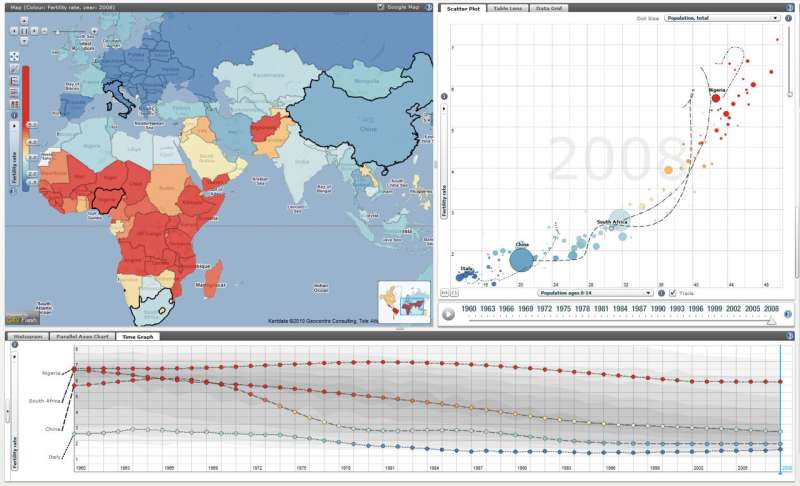This article has been reviewed according to Science X's editorial process and policies. Editors have highlighted the following attributes while ensuring the content's credibility:
fact-checked
trusted source
proofread
Learning to read in times of alternative facts

The child runs a finger along the lines of text, painstakingly mouthing the words. Teaching children to read and write has always been a major task for our schools, but developments in society require a new, broader view of what this means, according to researcher Ulrika Bodén at Linköping University, Sweden.
Opinions, facts, half-truths and lies are abundant online. An incalculable amount of information is available at the push of a button. This is almost too much to handle, both for children and adults.
"How can you get a fairly accurate view of the world? This is something that's really important for school students, they are the ones who will take over," says Bodén.
She worked as a teacher for more than 20 years before becoming a researcher at the Department of Behavioral Sciences and Learning. This spring, she finished her thesis on how complex information can be made comprehensible for school students through modern visualization technology.
In her opinion, visualization is one way of approaching the information overflow. But for this to be successful, teachers and students need to think in new ways.

Her research has involved spending a lot of time on observations in classrooms. She had students aged 13 to 15 try out a computer visualization program and, using a web camera, she was able to study their eye movements and what was happening on the screen.
The students took the task to heart. The screen showed a clickable map of the world that could display an array of diagrams, showing everything from carbon dioxide emissions to educational levels in various countries. The program also included some texts and links. The data was based on official statistics from the UN World Data Bank.
"The eye immediately sees where the highest or lowest emissions occur. You can easily get an overview of how, for instance, Sweden is doing," says Bodén.
Based on her observations, she analyzed how students used the visualizations and what challenges may be associated with this.
"They get really immersed. There's a lot of wows and ohs and ahs! Their eyes are immediately drawn to colors and shapes whereas written text becomes almost invisible. Getting stuck here makes them initially miss things."
Another challenge is that there is no beginning or clear order of reading. A normal written text goes from left to right. Here, students instead have to look for a place to start, and different people find different ways.
"If teachers don't know how to support students, this makes it even more difficult. When learning was about reading a specific number of pages, teachers would know how far their students had come. That's not as evident here," says Bodén.
The students also got to use the program to demonstrate their knowledge. They were instructed to use as little written text as possible and instead focus on visual presentations. This caused some concern, but the teachers were impressed with the end result.
"What students usually do is that they show their PowerPoint presentation and read the text that's in it. Here, they weren't allowed to have their text, so they talked more naturally. A few of them showed interactive visualizations and according to the teachers many performed better than usual."
But this way of gathering and demonstrating knowledge requires broadening the concept of reading and writing skills, according to Bodén. Visualization must be included, as it is such a powerful tool for understanding the world. Obviously, it all hinges on teachers being comfortable with the technology. They need to acquire knowledge about visualization already during their teaching studies and through skills development.
"It has been shown that introducing a lot of digital tools in school can be problematic. Students are often left to themselves because teachers haven't had enough training," says Bodén.
One thing teachers need to understand is where the eye lingers in a visualization, so that they can remind their students to read all the available text. They must accept that they are not in full control and that students will discover things the teachers are unaware of. A living conversation in the classroom about what facts and knowledge really are is also necessary.
And then there is the always ongoing debate about what school in Sweden should be like. Some want a return to more traditional teaching. Students have to be trained in reading and writing normal text on paper, they say.
"Digitalization has been criticized for being too extensive and too rapid, and probably rightly so. This leads to demands that we should return to traditional methods, but I don't think that's the solution. It's important to embrace and learn what's new. Students need to master both analog and digital reading and writing," says Bodén.
More information: Ulrika Bodén, Towards Visual Literacy in School : Interactions between Students and Interactive Visualizations in Social Science Classrooms, (2023). DOI: 10.3384/9789180750233
Provided by Linköping University





















